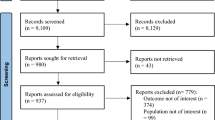Abstract
Jay Asher’s novel Thirteen Reasons Why and its Netflix adaptation have enjoyed widespread popularity. While they draw needed attention to issues like bullying and teen estrangement, they may have an unintended effect: they mislead about the etiology of suicide and even glamorize it to a degree. The medical literature has shown that suicide is almost always the result of psychiatric disorder, not provocative stress, in much the same way an asthmatic crisis is primarily the result of an underlying medical condition, not an allergic stimulus. Both the novel and Netflix series ignore this premise and even belittle the idea. Thus, while the story has artistic merits, it also has the potential to be destructive if accessed by young readers and viewers seeking guidance. Approximately ten percent of teens suffer from depression, and suicide recently surpassed homicide as the second-leading cause of death among persons ages ten to twenty-four in the United States. A more balanced view addressing these misconceptions is provided for teens, parents, and mental health professionals.
Similar content being viewed by others
References
13 Reasons Why: Beyond the Reasons. 2017. Los Gatos, CA: Netflix.
Asher, J. 2007. Thirteen Reasons Why. United States: Penguin Random House.
-----. 2017. “10 Years Affect Everything.” In Thirteen Reasons Why, edited by Razorbill Books, page vii. United States: Penguin Random House.
Cavanagh, J.T., A.J. Carson, M. Sharpe, and S.M. Lawrie. 2003. “Psychological Autopsy Studies of Suicide: A Systematic Review.” Psychological Medicine 33:395-405.
Curtin, S.C., M. Warner, and H. Hedegaard. 2016. “Increase in Suicide in the United States, 1999-2014.” CDC National Center for Health Statistics, brief no. 241. Accessed 22 January 2018. https://www.cdc.gov/nchs/products/databriefs/db241.htm.
Incaprera, J. 2017. Thirteen Reasons Why. Los Gatos, CA: Netflix.
Isometsä, E.T. 2001. “Psychological Autopsy Studies: A Review.” European Psychiatry 16:379-385.
Jamison, K.R. 1999. Night Falls Fast / Understanding Suicide. New York: Vintage Books.
McHugh, P.R. and P.R. Slavney. 1998. “The Concept of Behaviors – Suicide.” In The Perspectives of Psychiatry: Second Edition, edited by P.R. McHugh and P.R. Slavney, 238-250. Baltimore: The Johns Hopkins University Press.
Mojtabai, R., M. Olfson, and B. Han. 2016. “National Trends in the Prevalence and Treatment of Depression in Adolescents and Young Adults.” Pediatrics. https://doi.org/10.1542/peds.2016-1878.
Pridmore, S and Walter, G. 2013. “Psychological Autopsies.” Australian & New Zealand Journal of Psychiatry. 47: 978-879.
Robins, E.R., G.E. Murphy, R.H. Wilkinson, S. Gassner, and J. Kayes. 1959. “Some Clinical Considerations in the Prevention of Suicide Based on a Study of 134 Successful Suicides.” American Journal of Public Health 49:888-899.
Sheff, N. 2017. “13 Reasons Why Writer: Why We didn’t Shy Away from Hannah’s Suicide.” Vanity Fair Online. Accessed 22 February 2018. https://www.vanityfair.com/hollywood/2017/04/13-reasons-why-suicide-controversy-nic-sheff-writer.
Slavney, P.R. and P.R. McHugh. 1987. “Attempting to Deal with Ambiguity – Explanation & Understanding.” In Psychiatric Polarities, edited by P.R. Slavey and P.R. McHugh, 27-44. Baltimore: The Johns Hopkins University Press.
Sullivan, E.M., J.L. Annest, T.R. Simon, F. Luo, and L.L. Dahlberg. 2015. “Suicide Trends among Persons aged 10-24 years—United States, 1994-2012.” Morbidity and Mortality Weekly Report 64:201-205.
Wang, P.S., P. Berglund, and M. Olfson. 2005. “Failure and Delay in Initial Treatment Contact after First Onset of Mental Disorders in the National Comorbidity Survey Replication.” Archives of General Psychiatry 62:603-613.
Author information
Authors and Affiliations
Corresponding author
Additional information
Publisher’s Note
Springer Nature remains neutral with regard to jurisdictional claims in published maps and institutional affiliations.
Rights and permissions
About this article
Cite this article
D’Agati, D., Beaudry, M.B. & Swartz, K. Thirteen Reasons Why Revisited: A Monograph for Teens, Parents, and Mental Health Professionals. J Med Humanit 42, 345–353 (2021). https://doi.org/10.1007/s10912-019-09548-y
Published:
Issue Date:
DOI: https://doi.org/10.1007/s10912-019-09548-y



